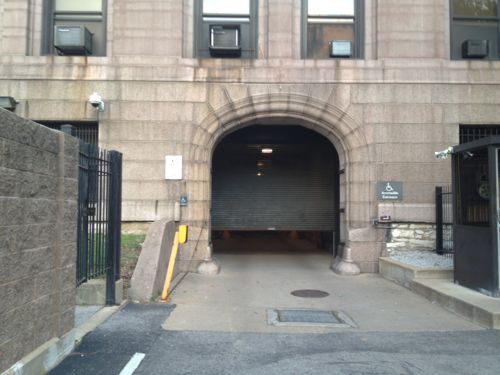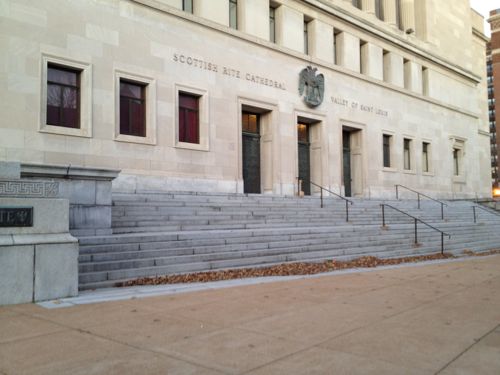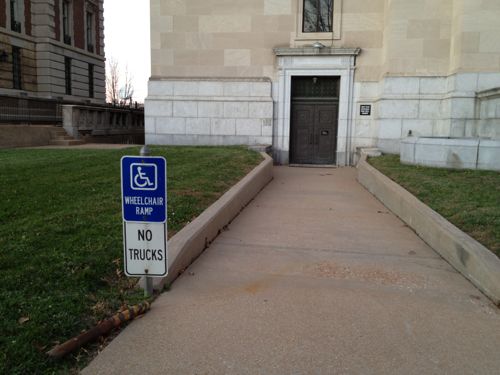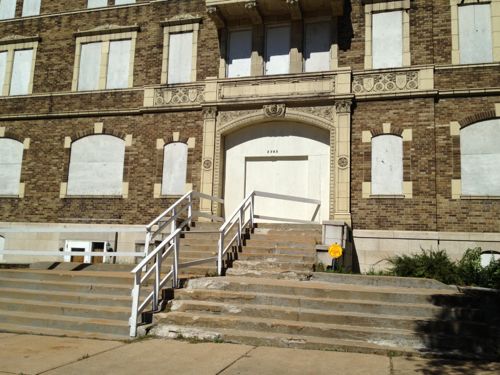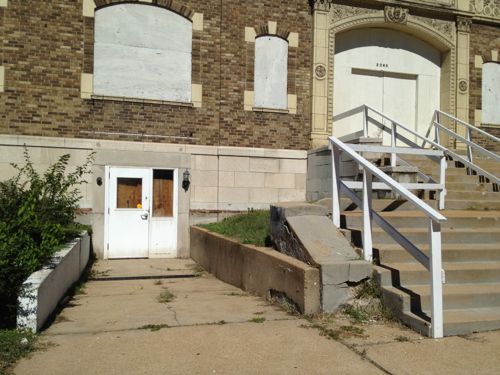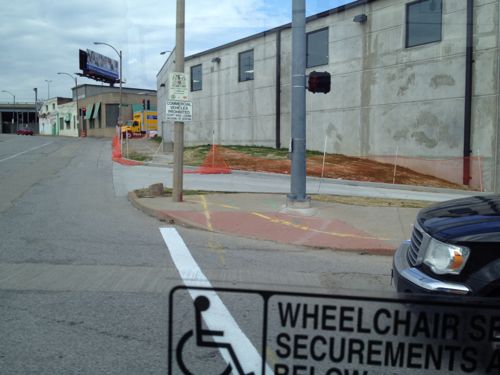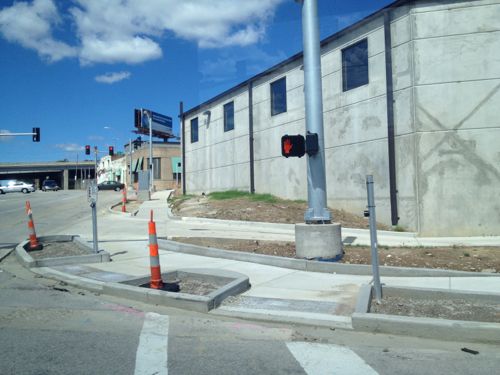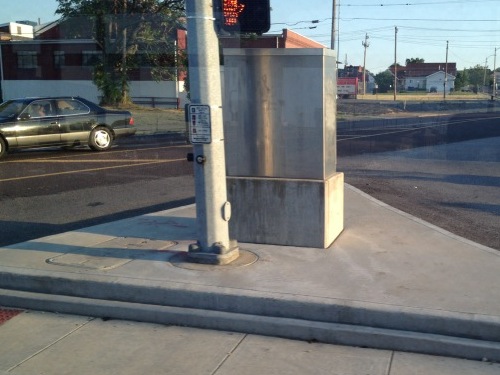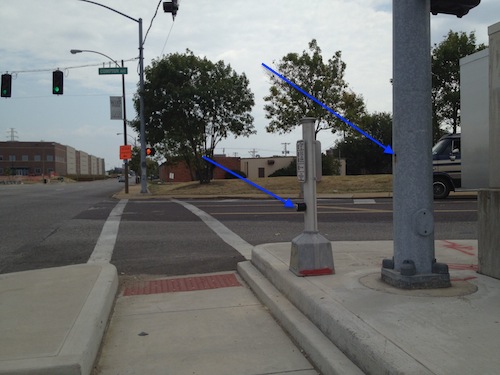New Nonprofit Formed Focusing On “(re)Connecting Cities” Through Pedestrian Networks
Metropolitan areas were once designed for pedestrians — compact with businesses accessed right off the public sidewalk. People lived and worked their entire lives in a very small area, there was no alternative. Streetcars and subways provided mobility allowing cities to expand in area, but people remained pedestrians when going to or leaving transit.
The private automobile changed things, requiring more and more space as more and more cars hit to the roads. As the car took hold land-use and buildings reflected this change. Tight grids of streets gave way to larger blocks without on-street parking in an effort to keep the cars moving.
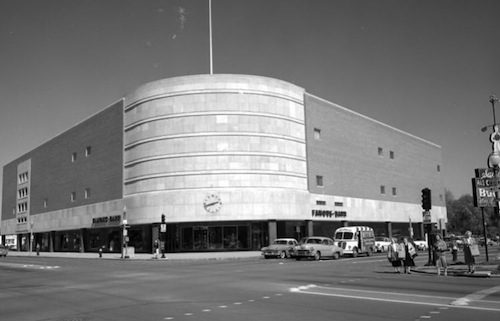
Even then the street corner was still an important place. New department stores, such as the Southtown Famous-Barr, were built up to the sidewalk making the journey easy for pedestrians and motorists had plenty of parking as well. In the 1950s many still didn’t drive but since then new development began to forget about the pedestrian, making car ownership a necessity for the first time.
A Walgreens now sits on the same corner as the old Famous-Barr, its relationship with Kingshighway and Chippewa is radically different.
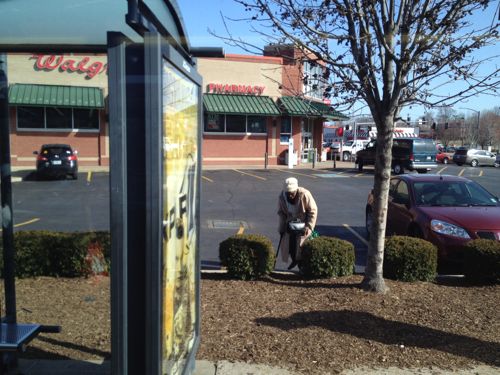
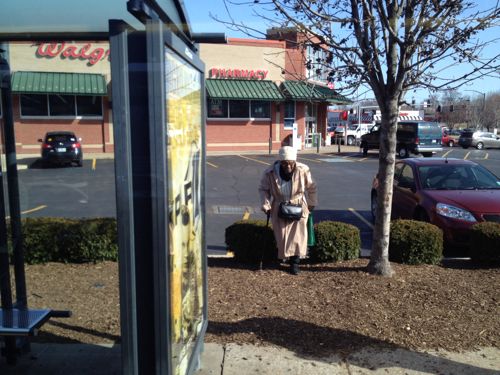
Despite what you may think, not everyone in society drives. I don’t know this elderly woman’s history — she may have driven in her younger days but she’s not walking now for the fun of it. She walks though planted areas, parking lots, etc because we’ve designed our built environment in such a way this is the reality for many to buy the necessities.
This is a long way of introducing my new nonprofit: (re)Connecting Cities. My idea is to advocate for all pedestrians, to work to make walking from the bus to the store and back not the undignified chore it is now.
(re)Connecting Cities will work to educate everyone on the benefits to society to connecting our buildings via sidewalks as well as we do for cars. Imagine if you had to drive through a muddy creek to get to the grocery store or over a pile of rocks — making a 4WD with high ground clearance a necessity? If you want milk & eggs you need a monster truck to do that.
We just expect roads, driveways and parking lots to be connected. Zoning makes sure there is an abundance of places to store vehicles yet in most cities/states nothing about being able to arrive on foot. Very unbalanced and unsustainable!
I don’t want to ban cars or have pedestrian-only streets, based on my research those rarely work in North America. I do want pedestrians to be given equal consideration when enacting zoning & building codes. I want architects, civil engineers and their clients to think about pedestrian arrival points, routes, and circulation, along with vehicular circulation. Communities often demand expensive traffic studies when a developer proposes a new project and nearby residents fear traffic congestion, yet a pedestrian access plan is never mentioned.
You’ll be hearing more about (re)Connecting Cities in the coming months and years.
— Steve Patterson

